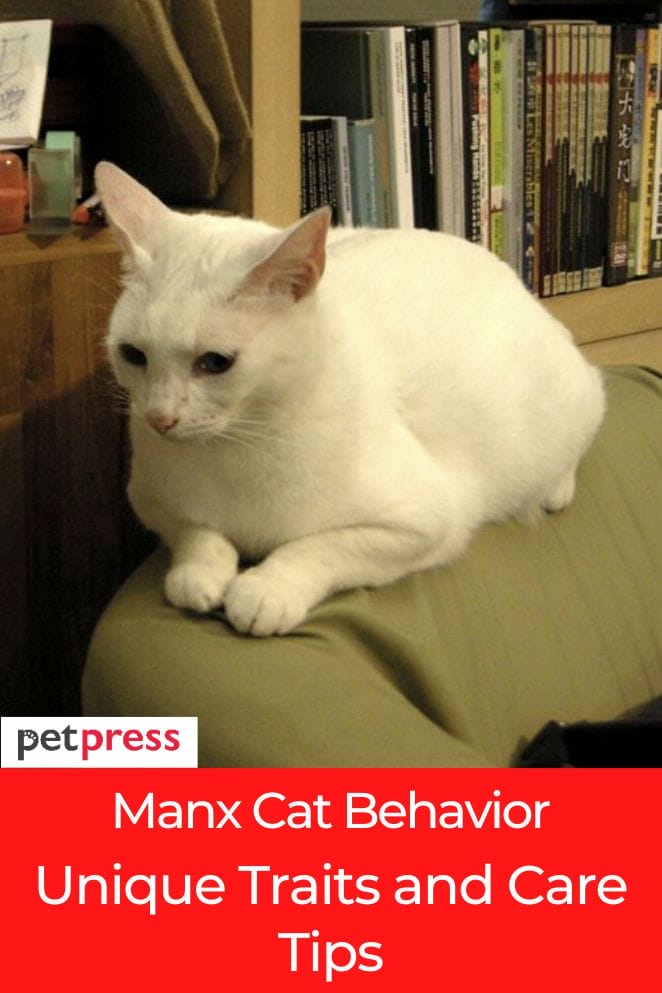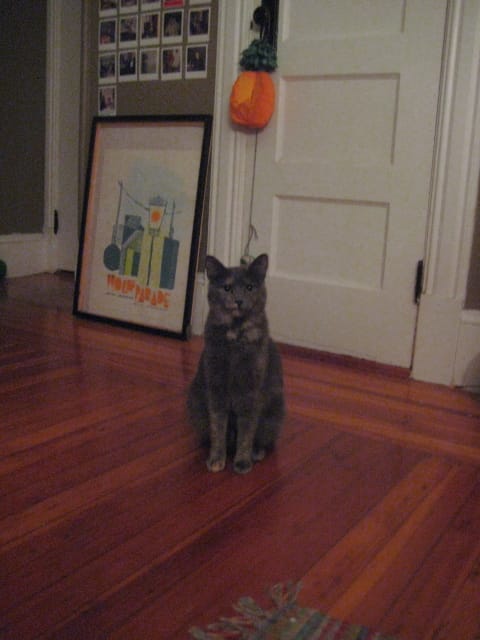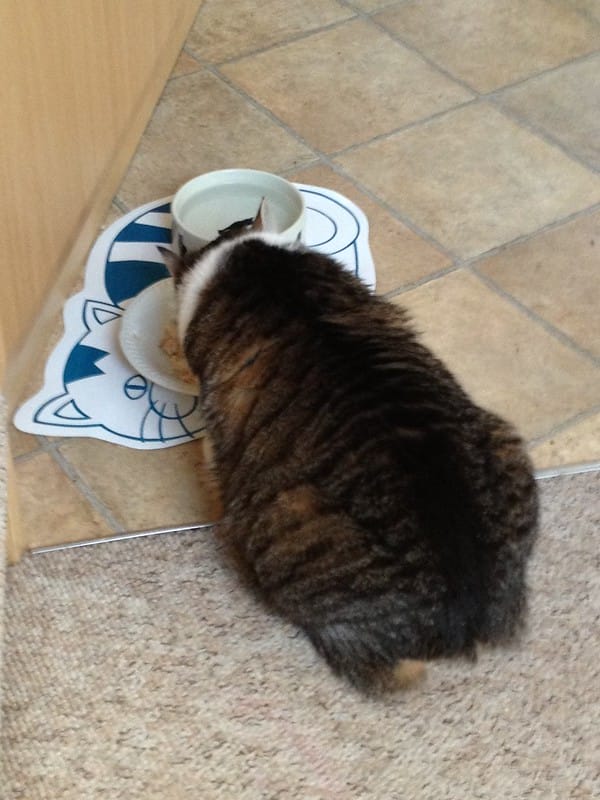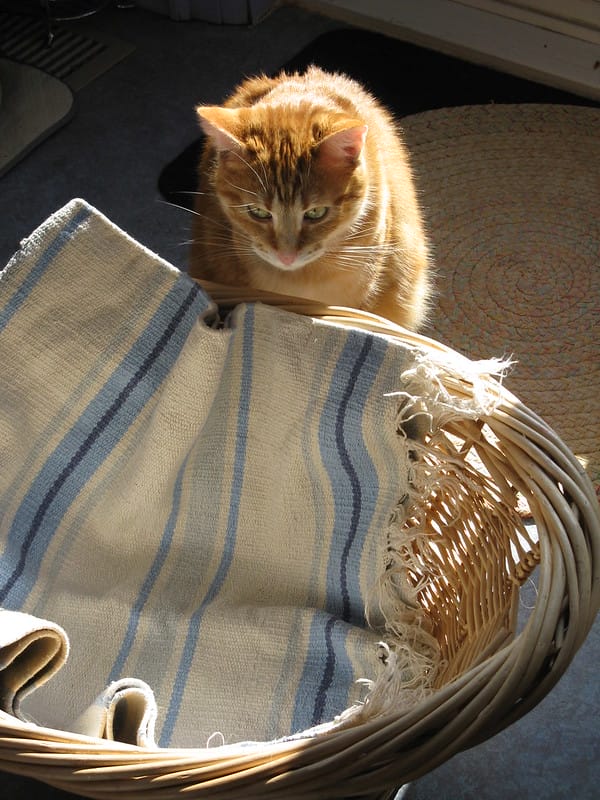
Hello, fellow cat enthusiasts! If you share our passion for those adorable furry companions, chances are you’ve come across the intriguing Manx cat breed.
They are indeed quite unique in many ways.
In this article, we will explore the captivating world of Manx cat behavior, delving into their historical roots, physical traits, distinctive characteristics, and even the challenges they can bring.
By the end, you’ll gain valuable insights into how to train and enhance the lives of these delightful tailless wonders.
So, let’s jump right in!
History and Origin of the Manx Cat
The Manx cat, known for its lack of a tail, has its origins on the Isle of Man in the Irish Sea.
There are two main theories about how they developed their distinctive trait.
One theory is that a spontaneous genetic mutation led to taillessness, which was then passed down through generations.
Another theory suggests that their seafaring ancestors on the island may have favored cats without tails due to their enhanced balance and agility in the harsh environment.
Regardless of their origin, Manx cats are adored for their unique appearance and charming personalities.
They’ve become beloved pets worldwide.

Physical Characteristics of the Manx Cat
Manx cats are indeed unique in their physical characteristics, and understanding these features can provide a deeper appreciation for this extraordinary breed. Let’s delve into the details:
- Size and build: Manx cats are typically of medium size with a sturdy and well-proportioned build. Their physique exudes strength and agility, making them excellent hunters and climbers.
- Taillessness or stubby tails: One of the most striking features of the Manx cat is their distinct lack of a tail, a trait that sets them apart from other feline companions.
- Hind Legs and unique gait: Manx cats are known for their hind legs being slightly longer than their front legs, which gives them a characteristic rabbit-like hop when they move.
- Coat variety: The coat of a Manx cat comes in a rich array of colors and patterns, making each individual unique.
Manx Cat Distinctive Behavior Traits
Manx cats are indeed a remarkable breed, and their distinctive behavior traits make them even more captivating.
Let’s explore these traits in greater detail:
Friendly and affectionate
Manx cats are renowned for their friendly and affectionate nature.
They thrive on human interaction and love being a part of the family.
You can expect your Manx cat to be a constant companion, following you around the house and seeking your attention.
They are known for their strong bonds with their human companions and often enjoy cuddling in your lap.
Playful and mischievous
Manx cats have a playful and mischievous side that adds a delightful element to their personality.
They enjoy interactive play and will eagerly chase after toys, engage in hide-and-seek games, and even indulge in the occasional game of tag.
Their playfulness can bring joy and laughter to your home.
Dog-like behavior
One of the most distinctive traits of Manx cats is their dog-like behavior.
They exhibit behaviors that are often associated with dogs, such as fetching toys.
Many Manx cats take great pleasure in playing fetch, carrying toys in their mouths, and bringing them back to you, just like a loyal pup.
Social nature
Manx cats are highly social animals.
They are not typically aloof or independent and thrive on interaction with their human family members.
Their social nature makes them an ideal choice for households where they can receive ample love and attention.
Intelligence and problem-solving
Manx cats are known for their intelligence and problem-solving abilities.
They enjoy puzzle toys and challenges that engage their minds.
This intelligence makes them quick learners, and they often respond well to positive reinforcement training.

Manx Cat Behavioral Challenges
Manx cats, with their charming qualities, do come with some behavioral challenges that owners should be aware of.
Let’s take a closer look at these challenges and how to address them:
- Separation anxiety: Manx cats are known for their strong attachment to their owners. They can become quite bonded and may experience separation anxiety when left alone for extended periods.
- Playfulness and energy: Manx cats are playful and energetic, which is part of their charm. However, their exuberance can sometimes lead to accidental scratches or broken objects.
- Grooming needs: Their medium to long coat requires regular grooming. Some Manx cats may have a dense double coat that can mat if not maintained.
- Scratching behavior: Like all cats, Manx cats have a natural instinct to scratch. While this behavior is normal, it can be challenging if they target your furniture.
- Health considerations: Some Manx cats may experience health issues related to their unique tailless or short-tailed feature.
Training and Enrichment

Training and enrichment are vital aspects of caring for your Manx cat, ensuring their mental stimulation and overall well-being.
Here’s a closer look at how to train and provide enrichment for your intelligent and playful Manx companion:
Training
Positive reinforcement
Manx cats respond well to positive reinforcement techniques. Use treats, praise, and affection to reward good behavior.
This can be particularly effective in teaching them obedience and tricks.
Basic commands
Start with basic commands like sit, stay, or come. Be patient and consistent in your training.
Gradually introduce more advanced commands as your cat becomes more proficient.
Litter box training
If you have a young Manx cat or a new addition to your home, introduce them to the litter box gently.
Use positive reinforcement when they use it correctly, making it a positive experience.
Enrichment
Variety of toys
Manx cats are playful by nature and thrive on stimulation.
Provide them with a variety of toys, including feather wands, interactive laser toys, and crinkly balls. Rotate these toys to keep their interest piqued.
Scratching posts
Offer multiple scratching posts and pads in different locations throughout your home. This helps satisfy their instinct to scratch and keeps their claws in check.
Interactive playtime
Spend quality time engaging in interactive play sessions with your Manx cat.
Whether it’s a game of chase, hide-and-seek, or a toy that mimics prey, these activities cater to their playful nature.
Puzzle feeders
Puzzle feeders challenge their minds while providing a meal.
These devices can stimulate their problem-solving skills, prevent overeating, and make mealtime more engaging.
Conclusion
Manx cats are a one-of-a-kind feline breed known for their unique appearance and endearing behavior traits.
Their history, physical characteristics, and distinctive behaviors make them a fascinating addition to any cat-loving household.
While they can present some challenges, with the right training and enrichment, Manx cats can be wonderful, loving companions.
So, if you’re considering adopting one of these charming bobtails, go ahead and welcome them into your home. You won’t be disappointed!
FAQs
Manx cats are generally good with children and other pets. Their sociable and friendly nature makes them great companions for the whole family.
While many Manx cats have no tails, some may have short, stubby tails. This variation is part of what makes this breed so unique.
To prevent separation anxiety, gradually introduce your Manx cat to alone time and provide them with toys and activities to keep them occupied when you’re not around.
Manx cats enjoy interactive toys, feather wands, puzzle feeders, and balls for chasing. Experiment with different toys to see what your cat prefers.
Absolutely! Manx cats are intelligent and can be trained to perform tricks with the right positive reinforcement techniques. Start with simple commands and gradually progress from there.


GIPHY App Key not set. Please check settings